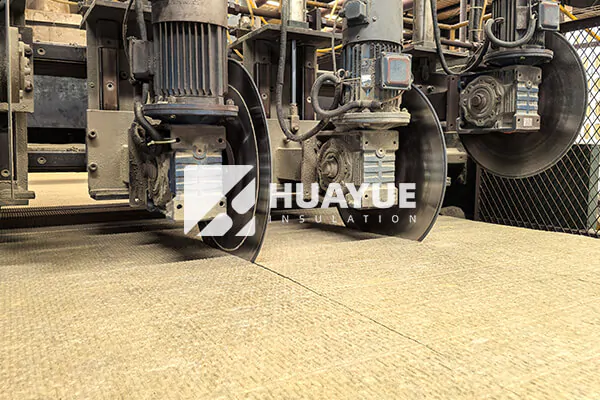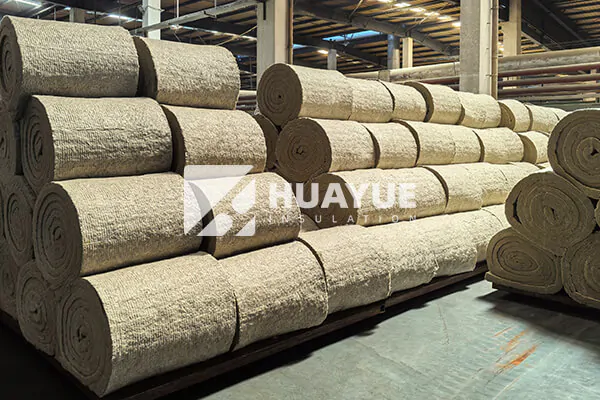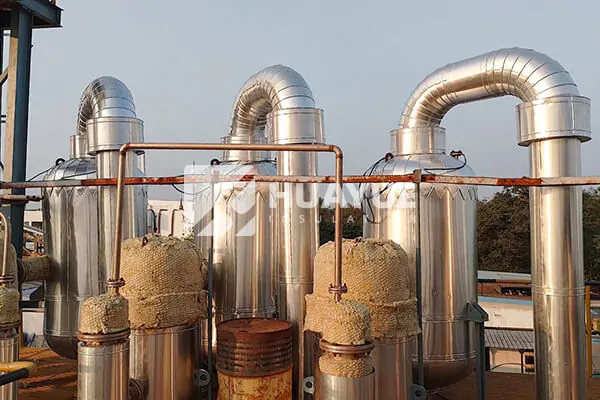Faced Mineral Wool Insulation: What Should You Know?
Many of us want insulation that works well, is safe, and will last for years. But faced mineral wool insulation can have some surprising differences if you dig a little deeper.
Yes, mineral wool insulation can come faced, and the facing usually acts as a vapor barrier to help control moisture movement in your walls or ceilings.

When I first started working with insulation solutions, I noticed customers often felt confused over which products to choose. The world of insulation has many small details that can change everything. If you are curious about how faced and unfaced mineral wool differ, or what problems you might run into, keep reading—there are things you should know before making your choice.
Does mineral wool insulation come faced?
Many homeowners and professionals wonder if mineral wool insulation is available with a facing, like some fiberglass products.
Yes, mineral wool insulation can come with a facing such as foil or kraft paper, but it’s more common to find it unfaced.

Faced mineral wool insulation is usually ordered for special projects that need a vapor control layer. For example, in areas with high humidity or potential condensation, adding foil-faced mineral wool can help limit moisture from seeping through. But most mineral wool comes unfaced because its natural fibers are already water repellent and do not support mold growth. I have seen many projects in Europe where unfaced mineral wool was installed directly, and it still performed well under tough conditions.
Here’s a quick look at the common types of mineral wool facings:
| Facing Type | Purpose | Typical Use |
|---|---|---|
| Foil Facing | Vapor barrier, radiant block | Roofs, humid areas |
| Kraft Paper | Simple vapor retarder | Walls, attics |
| No Facing | Breathable, non-barrier | Fire-resistant locations |
It is important to check your building environment before you decide on faced or unfaced options. Building codes and climate always matter.
What are the disadvantages of mineral wool insulation?
Some people ask if mineral wool has any downsides compared to other insulation materials.
Mineral wool insulation can be more expensive, sometimes harder to install due to its weight, and may release fibers if not handled correctly.
When I handled my first batts of mineral wool, I noticed right away that it was heavier than fiberglass. Cutting it to fit tight spaces took practice. Sometimes, those loose fibers can also cause itching or skin irritation if I forgot my gloves and mask. The extra density means it can add weight to wall systems, which may affect how framing is done. Here’s a direct comparison to make it clear:
| Issue | Mineral Wool | Fiberglass |
|---|---|---|
| Cost | Higher | Lower |
| Weight | Heavier | Lighter |
| Fiber Release | Moderate | Moderate |
| Water Repellency | Good | Poorer |
| Fire Resistance | Excellent | Moderate |
Despite these challenges, I still turn to mineral wool for its long lifespan and high fire rating. But I always warn customers about possible handling and installation concerns upfront. Budget and installer skill matter.
Will mice chew through rockwool insulation?
Rodent damage is a common worry for industrial storage or residential attics.
Mice do not like chewing through rockwool insulation, but no insulation can guarantee total rodent resistance.

During one maintenance project, I opened a tank insulation layer after five years of service. The rockwool showed no signs of mouse tunnels or nests. Compared to foam insulation, which is sometimes shredded by rodents looking for nesting material, mineral wool and rockwool are unattractive because their coarse fibers irritate animal mouths and skin. This natural deterrence means fewer pest problems. However, if there are large gaps or entry points near the insulation, determined rodents may still find a way in, especially if food or warmth is nearby. Blocking entry points and sealing edges go a long way.
| Insulation Type | Rodent Resistance | Notes |
|---|---|---|
| Mineral Wool | High | Coarse fibers deter burrowing |
| Foam Board | Low | Attractive for nesting, easily gnawed |
| Cellulose | Moderate | Additives may help repel insects/rodents |
No one wants unexpected guests in their insulation, so I always suggest checking for any potential rodent entries before installation.
Is there a difference between rockwool and mineral wool?
Some customers wonder if these two terms mean something different.
Rockwool and mineral wool refer to similar materials, but rockwool is a type of mineral wool made specifically from basalt rock.
Whenever I visit a client and mention rockwool, they sometimes look confused. That’s because “mineral wool” is a bigger family that can include stone wool (rockwool), slag wool, and sometimes glass wool. Rockwool usually uses basalt and diabase, while other mineral wools may use industrial slag as the main raw material. Both have similar fiber structures, but their raw materials and some properties differ slightly.
| Material Name | Main Raw Material | Main Use | Typical Properties |
|---|---|---|---|
| Rockwool | Basalt, Diabase | Fire, thermal, acoustic | High temp. resistance |
| Slag Wool | Blast Furnace Slag | Industrial uses | Lower temp. resistance |
| Glass Wool | Recycled Glass | Home insulation | Lower density, flexible |
So, if you ask for rockwool, you are asking for a type of mineral wool, but always check the raw material if you need very specific performance.
Will mold grow on mineral wool insulation?
With concerns about mold in many buildings, people wonder if mineral wool is safe.
Mineral wool insulation does not support mold growth. Its inorganic fibers do not provide food or moisture for mold.
I have opened up wall cavities on renovation sites that used mineral wool for insulation. Even after years in service and occasional leaks, the material looked almost new and mold-free. This is because mineral wool is made from stone or slag, with nothing organic for mold spores to eat. If you install it in a wet spot but allow it to dry out quickly, it will not foster any mold. You still need to solve any water leak issue, but you can trust mineral wool as an anti-mold option.
What happens if mineral wool insulation gets wet?
Moisture sometimes finds its way in, so I have had to reassure clients about what really happens.
Mineral wool insulation is water repellent. If it gets wet, it dries out and regains most of its original properties.
I watched my team install mineral wool on an outdoor tank during a sudden rainstorm. The surface water beaded up and mostly rolled off. The material absorbed little moisture. When the sun came out and everything dried, the insulation still performed well. Unlike foam or cellulose that can break down, mineral wool bounces back after drying. But the key is airflow—if liquid water is trapped and cannot dry, that’s when problems start. Always let wet insulation air dry before sealing up the area.
How long will mineral wool insulation last?
People want to know if their investment is for the long term.
With proper installation, mineral wool insulation can last over 50 years without losing its core performance.
Some buildings I have worked on in Europe used mineral wool from the 1970s. When I cut into the walls, the insulation was still dense, dry, and fire-resistant. Most manufacturers rate mineral wool for 50 years or more because it is inorganic and does not decompose. Its structure does not change with age if kept dry and safe from physical damage. This means a tank or building can benefit from one install for decades with very low maintenance.
Conclusion
Faced or unfaced, mineral wool insulation brings long-term durability, strong fire resistance, natural mold blocking, and rodent deterrence, with only a few handling and cost challenges to watch for.
You may also be interested in:
Ready to Get Started?
Get in touch with our experts for personalized solutions tailored to your needs.
Get Free QuoteLatest Articles

Fiberglass Insulation Roll - What’s Inside the Roll?
Dec 22, 2025
Let's Work Together
Ready to take your business to the next level? Get in touch with our team of experts and let's discuss how we can help you achieve your goals.
Get Free Solutions






